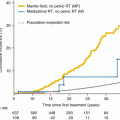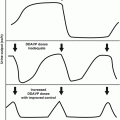© Springer International Publishing 2015
Cindy L. Schwartz, Wendy L. Hobbie, Louis S. Constine and Kathleen S. Ruccione (eds.)Survivors of Childhood and Adolescent CancerPediatric Oncology10.1007/978-3-319-16435-9_2222. Methodology Considerations in the Study of Survivors of Childhood Cancer
(1)
Cancer Prevention Program, Fred Hutchinson Cancer Research Center, Seattle, WA
(2)
School of Public Health, University of Alberta, Edmonton, AB, Canada
(3)
Department of Hematology/Oncology, Children’s Healthcare of Atlanta-Egleston, 2015 Uppergate Drive, Atlanta, GA 30322, USA
22.1 Introduction
22.2.1 Selection of Study Subjects
22.2.2 Bias, Confounding, Matching
22.2.3 Exposure Assessment
22.2.4 Outcome Assessment
22.2.4.1 Confirmation of Key Medical Events
22.2.6.1 Tracing Techniques
22.2.7 Use of Molecular Tools
22.3.1 Descriptive Studies
22.3.2 Analytic Studies
22.3.2.1 Case-Control Study
22.3.2.2 Cohort Study
22.3.2.3 Nested Case-Control Design
22.3.2.4 Case-Cohort Design
22.3.2.5 Intervention Studies
22.1 Introduction
Numerous reports and reviews have been published about the late effects of cancer and its treatment among childhood cancer survivors [17, 19, 22, 27]. This literature describes the sequelae present at, or shortly following, the end of therapy, as well as the occurrence of selected late complications. Most studies of late sequelae focus on medical outcomes, although psychosocial and economic outcomes among survivors have a growing literature. These studies have shown that the type and intensity of therapy, as well as the age of the patient at therapy, are important factors influencing both overall survival and the occurrence of late effects. Children who are younger at diagnosis and treatment are more severely affected than older children, particularly if treatment is administered at a time of significant development and growth. However, specific treatment exposures and outcomes remain to be investigated in depth. Well-designed epidemiologic investigations of these subjects can provide strong and reliable evidence on which to base both clinical practice and health policy. The objectives of this chapter are to present an overview of methodological issues important in the proper conduct and analysis of late-effect studies, to outline briefly several types of study design that are useful, and next steps in the research of childhood cancer survivorship research.
22.2 Methodological Issues Relevant to Survivor Studies
22.2.1 Selection of Study Subjects
Studies of late effects begin with the conjecture that a particular factor or exposure may influence the occurrence of a disease or outcome. A study is then designed to test the conjecture or hypothesis. The first, and perhaps the most important, task in the study design is the definition and selection of the population to be tested and the definition and selection of the comparison group, i.e., the group that will appropriately determine whether a statistical association exists between the factor or exposure of interest and the outcome or disease of interest. The study population must be defined in such a way that it is as representative as possible of the wider population of interest (i.e., the entire population of childhood cancer survivors). Care must be exercised in selecting survivors and a non-survivor comparison population to minimize the possibility of differential selection on the basis of exposure. The first step in the survivor case selection is to define the disease/outcome of interest and to establish strict diagnostic criteria to keep the disease entity well defined. Subjects can be obtained from a population-based source, such as a disease registry, from hospital or clinic records over a specified period of time, or they can be members of a defined study cohort assembled from a single institution or a consortium of treating institutions. Each source from which potential study subjects can be drawn will present both drawbacks and benefits. Studies that recruit their subjects from single institutions generally suffer from small sample sizes and findings may be less generalizable. There are advantages to single institution studies, particularly if outcomes of interest require clinic follow-up or testing. Clinical trial consortiums, such as the Children’s Oncology Group, have the advantage of being able to evaluate protocol-defined patient cohorts who receive uniform therapies. A drawback, however, is that cases enrolled in the study are not necessarily representative of the full spectrum of a disease or diseases. To define a study cohort based on protocol-defined disease or diseases among such a consortia of institutions allows for complete case ascertainment from each participating institution but can also suffer from low participation rates or from subjects being lost to follow-up.
An important rule of thumb for the selection of the non-survivor comparison group is that it should represent a population with the potential to develop the disease or condition being studied. The use of siblings of survivors as the study’s comparison group is appropriate, on the assumption that these individuals share many of the same genetic and environmental factors, with the exception of treatment exposures, and, as a result, that their risk for developing diseases/conditions was comparable to that of their sibling who had had cancer. A significant drawback to using siblings, however, is if the outcomes of interest are factors for which they will be over-matched, such as genetics or other familial factors. There are also limitations if analyses are restricted to complete sibling pairs, such that patients without involved siblings are not represented. The usual alternative is to include all survivors plus any siblings that agree to participate, with care taken to evaluate the degree to which the siblings (or their survivor pair) who participate are representative of those who do not. If they are not representative, then bias may also be introduced in this setting. For all research involving human subjects, it is critical that the study protocol is reviewed and approved by their Institutional Review Board, all potential subjects are properly informed of their risk in participation, and consent is received before subjects are enrolled in research.
22.2.2 Bias, Confounding, Matching
Once a well-defined study population has been assembled, it is then necessary to assess the study hypothesis with considerations of possible alternative explanations and whether the statistical association under investigation represents a cause-effect relationship between exposure and disease.
To determine whether a statistical association is valid, possible sources of bias must be considered and, if possible, eliminated. Bias refers to any element of the study design, data collection, or data analysis that introduces a systematic error into the results. It can occur when individuals are selected into a study or through the manner in which information is obtained or reported. Bias is minimized by ensuring that subject selection, exposure assessment, and methods of collecting information are all identical between the two groups being compared.
Confounding is an alternative explanation for an observed association between an outcome and an exposure. Confounding occurs when unmeasured or uncontrolled factors associated both with the exposure and with the outcome explain the observed association. A confounder variable cannot be a step in the causal pathway between the exposure and the outcome. One can control for known confounders either in the study design or analysis phase. To address confounding in the study design, matching can be performed. Matching is the selection of a comparison group that is identical to the group of interest with respect to the distribution of one or more confounders. Often, one matches on known major risk factors, such as age for chronic diseases, in order to remove their effect so that the effect of exposure variables under study can be more clearly discerned. If sufficient numbers of subjects with a full range of confounding covariate values are present in the cohort, then adjusted comparisons can be made using regression techniques for analyses.
22.2.3 Exposure Assessment
In assessing the risk of late effects by therapeutic exposure, one must obtain accurate and detailed information on all cancer therapies received by the patients. The assessment process must be unbiased with respect to patients’ characteristics, including the types of cancer, the treating institution, whether the patient has experienced any late effects, and the length of follow-up. Specifically, the information must be equally available and of equal quality across all institutions participating in the study. Furthermore, it should include all relevant exposures prior to development of the condition under investigation, including treatment for any recurrence of the individual’s original diagnosis and for any subsequent primary cancer. A potential obstacle to the accurate assessment of therapeutic exposures is either incomplete or lost medical records. To ensure accuracy and minimize bias, a detailed, clear protocol for therapeutic exposure assessment must be prepared and followed. Such a protocol includes the development of a structured, medical record abstraction form, as well as consistent training of personnel to abstract the medical records. Alternatively, the late effects resulting from a phase III randomized clinical therapeutic protocol can be evaluated without such an in-depth record review by comparing outcomes based on assigned treatment regimen.
22.2.4 Outcome Assessment
While medical records can be used to ascertain outcome data, such records have significant limitations in the study of long-term outcomes in childhood cancer survivors. As survivors grow into adults, the medical facilities at which they receive care will likely shift from the institutions where they were treated for their primary diagnosis to adult care facilities. Because of the large number of adult care facilities involved, requesting copies of records can be costly, as well as inefficient. Direct communication with study subjects – in person, by telephone, or by mail – using standardized interview protocols or questionnaires, is a more practical method of preliminary outcome ascertainment in late-effect research. Data on outcomes for which self-reporting is unreliable can then be supplemented/validated by a focused collection of medical records, potentially using electronic medical records to facilitate these efforts.
A well-constructed survey instrument capable of eliciting reliable and valid medical information from study subjects is crucial to success in late-effect research. Questions must be phrased in such a way as to obtain the most accurate information possible while encouraging high response rates. Both closed and open-ended questions can be useful in late-effect studies. Closed questions require subjects to respond with a limited number of set responses (e.g., a list of drugs); open-ended questions require respondents to recall information and give explanations of events. All questionnaires and other data capture forms must be piloted before first use to determine whether questions are properly phrased, unambiguous, and at an acceptable reading level and to ensure that the contents of the questionnaire and the length of time required to complete it are acceptable to respondents. Determination of these properties of the questionnaire is best performed with individuals who are similar to those to be enrolled in the study (i.e., similar age group, parents of children in hospital with other health conditions), but not be a potential study subject.
22.2.4.1 Confirmation of Key Medical Events
Data on key medical events collected by interview or questionnaire can be validated by medical records, particularly for well-known medical events that have clear diagnostic criteria, and where the participant has good recollection of where they were seen for the condition [15]. For example, information about hospitalizations for recurrent or new primary neoplasms can be validated by obtaining the pathology report from the diagnosing hospital. Review of the pathology report can then confirm the diagnosis reported on the questionnaire.
For validation of other medical outcomes, careful consideration has to be made as to which outcomes of interest warrant additional personnel effort and cost. First, outcomes that are self-reported on a study questionnaire can be followed-up with a telephone script to elucidate whether and where the participant received treatment for the reported outcomes. Second, using a signed HIPAA release form, a request for the subject’s medical records for the time period of the diagnosis of the selected outcome can then be made to the appropriate institution. Key late effects that can be validated in this fashion, if the medical records can be obtained, include congestive heart failure, myocardial infarction, stroke, and lung fibrosis.
Medical records are useful for identifying false-positive, self-reported outcomes; however, it is difficult to identify false-negative outcome events that are not reported by the respondent. To remedy this, a fraction of the study subjects who do not self-report a selected outcome can be chosen randomly for assessment by medical records. For the analysis of potentially misclassified outcome data with a validation subset such as this, see references [23, 24].
Key medical events can also be validated during a clinical assessment. For example, risk-based health evaluations, as recommended by the Children’s Oncology Group for childhood cancer survivors, can be used to document key medical events during a cancer survivor clinic visit [5]. Alternatively, specific physical evaluations could be requested through one of the medical research institutions designated within the Clinical and Translational Science Award (CTSA) program, which is supported by the National Institute of Health [6]. The CTSA Consortium consists of approximately 60 medical research institutions located throughout the United States and provides researchers the use of inpatient and/or outpatient nursing units and/or use of laboratory resources for NIH grant funded projects [9].
22.2.5 Need for External Comparisons
A comparison group outside of the survivor population of interest is needed to evaluate the extent of the excess risk of a selected outcome experienced by survivors. For example, it is expected that chronic disease frequencies increase as survivor’s age: the question is whether, and to what extent, survivors are experiencing excess risk beyond that seen in the general population. An external control cohort, whose members have not been exposed to the therapy-related risk factors under investigation, such as survivors’ close-age siblings or friends, can provide a convenient comparison group. To avoid potential bias, assessments of exposures and outcomes in such an external comparison cohort must be done in an equal manner as in the survivor cohort. Survivor cohorts can also be compared to available population data, such as mortality from vital statistics, cancer incidence from the US surveillance, epidemiology, and end results (SEER) program, or health behaviors reported in the National Health Interview Survey (NHIS). To assure comparability of study data with external population data, it is necessary to use the same definitions of outcomes (e.g., specific types of cancer as defined by SEER) and the same questionnaire items (e.g., smoking question items used in the NHIS) as those used by the population registry or survey to which study participants are being compared.
22.2.6 Importance of Thorough Recruitment and Follow-Up
Significant loss of eligible cases in any study can compromise the validity of study findings, since it will be difficult to determine if exposures or outcomes of interest are in some way related to the loss. Non-participation in case-control studies can cause bias if response rates differ between cases and controls and are somehow related to exposure. Loss to follow-up from either cases not found at the initiation of the study or those lost after entry into the cohort introduces another potential source of bias. For example, individuals who remain in the study might be healthier than those who drop out or those who participate may not be truly representative of the population in terms of rates of disease or risk factors.
22.2.6.1 Tracing Techniques
In late-effect research, it is particularly important to achieve maximum ascertainment, enrollment, and follow-up of the eligible study population in order to minimize the potential introduction of bias. One challenge is to locate subjects who may have moved since they became eligible for membership in the cohort [18, 21]. Hospital records are commonly used for assembling a cohort. Because most of the information contained in such records is not collected with the objective of long-term follow-up, key pieces of information that would facilitate tracing and successful location of eligible subjects are often missing. Moreover, subjects who have ongoing medical conditions, which might include the research outcomes of interest, may be more likely to have been seen in follow-up visits and to have had their addresses updated in their medical records. This increases the potential for enrolling a selected and possibly biased study population.
Stay updated, free articles. Join our Telegram channel

Full access? Get Clinical Tree






